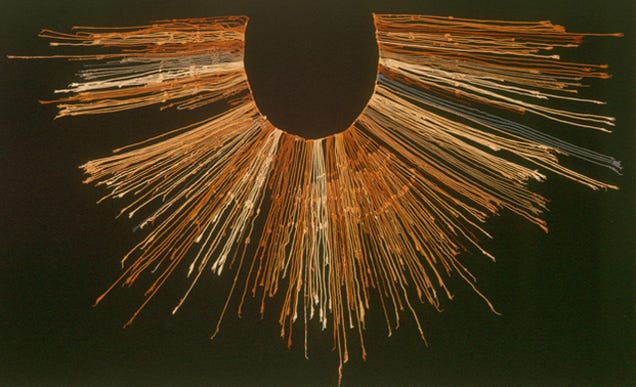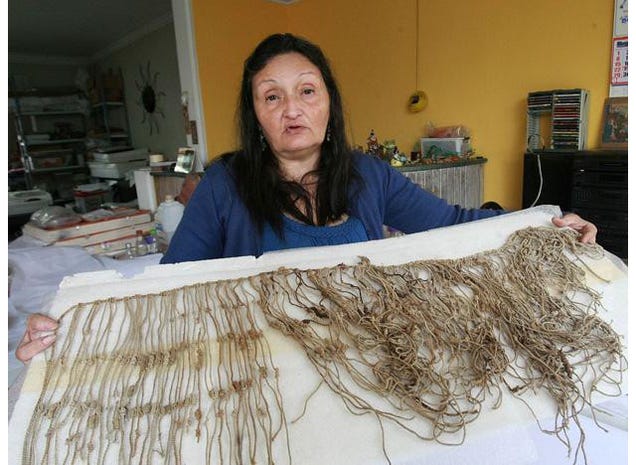Potoooooooo
Contributor
http://io9.com/archaeologists-uncover-a-trove-of-rare-inca-calculating-1596906974
Archaeologists working in Peru have discovered 25 well-preserved quipus, an ancient string-based device used to solve mathematical problems and to assist in record-keeping.

Quipu (also called "khipus" or "talking knots") typically consisted of colored, spun, and plied thread or strings from llama or alpaca hair. They aided in data collection and record-keeping, including the monitoring of tax obligations, census records, calendrical information, and military organization. The cords contained numeric and other values encoded on knots in a base-10 positional system. Some quipu had as many as 2,000 cords.

Regrettably, many of these quipus were destroyed by the Spanish conquistadors in the 16th century, making this recent find all the more precious.
Archaeologists working in Peru have discovered 25 well-preserved quipus, an ancient string-based device used to solve mathematical problems and to assist in record-keeping.

Quipu (also called "khipus" or "talking knots") typically consisted of colored, spun, and plied thread or strings from llama or alpaca hair. They aided in data collection and record-keeping, including the monitoring of tax obligations, census records, calendrical information, and military organization. The cords contained numeric and other values encoded on knots in a base-10 positional system. Some quipu had as many as 2,000 cords.

Regrettably, many of these quipus were destroyed by the Spanish conquistadors in the 16th century, making this recent find all the more precious.

